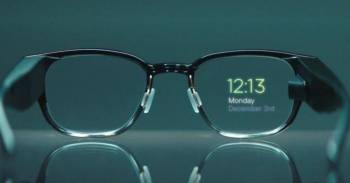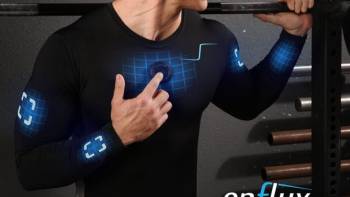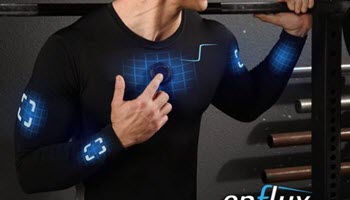Wearables. It’s a funny word. A word that somehow slipped into the conversation of mainstream tech. It sounds like a term I would have thought into existence as an eight-year-old. While a silly name accompanies this growing sector of the tech industry, the products and technologies are a bit more serious. What started as a pedometer or heart rate monitor quickly grew into an all-in-one watch capable of providing directions, purchasing items online, and detecting when you have a major fall and calling the ambulance. This, of course, is the Apple Watch– the most successful wearable to date. While tech giants and startups alike make other products meant to be worn on the body, none have penetrated the market quite as massively. But today, I want to look at the possibilities and pitfalls of some of the more ambitious, creative, and innovative tech in this new category we are fated to call “wearables”.
Smart Rings

Smart rings have been a gimmick in the tech world for a while, with rings that light up and deliver a vibration or a light when you have a notification on your phone. It’s an idea that seems to be nothing more than a tech toy for the gadget lover. Apple and Amazon seem to think otherwise.
Apple just won a patent for a smart ring device and Amazon recently released its own smart ring called the Amazon Echo Loop (not to be confused with Amazon Ring, the smart home security). The Amazon Echo Loop is connected to Alexa and has a microphone and tiny speaker for all your Alexa inquiries. It also vibrates for various functions. As far as the real use or target market for this product, that is yet to be seen. The speaker is said to be very tinny and making a call on one looks hilariously uncomfortable at best. Maybe Apple has a better idea for the smart ring. Here’s one idea– buzz, ring, and flash like crazy on your anniversary date.
Smart Glasses

Snapchat had their brief success with spectacles– the fun and quirky sunglasses with a camera for capturing fun moments for your Snapchat stories. While they had a big fan following, their success was short-lived. So here comes Amazon once again with the Amazon Frames. They’re looking for a different approach. Inundated with privacy concerns, Amazon opted to release their glasses sans camera. With nothing but a speaker and microphone, they’re meant to link you to their favorite digital assistant– Alexa. They can make your calls or Alexa can help with whatever inquiry you throw at her. While not available to the general public yet, we will soon see how this iteration of the smart glasses plays out. A useful idea and one that already exists in the world of aviation as the HUD (Heads Up Display), but seems to lack usefulness in the day-to-day. Personally, I don’t think we’re asking for augmented reality glasses or a digital assistant on our faces. I liked the Google Glass idea best but the verdict is still out on smart glasses.
Smart Clothing

Smart clothes seem like the tech industry trying to squeeze every last penny out of our pockets by offering some unnecessary items like pizza-delivering shoes. But smart clothing could just be the next big thing and I believe some of these products could be the most useful. Imagine clothing that recharges your battery by collecting static electricity or body heat and converting this to power. Or clothing that keeps your body temperature steady so workers in arctic regions could survive harsh conditions. Glowing clothing could save the lives of construction workers or late-night runners. Smart clothing tends to focus on the fitness wearer but there are some real-life implementations for this technology beyond the avid runner or yoga instructor. Patients with medical conditions could wear a T-shirt that could send critical data back to the hospital and monitor vitals from home. Physical therapy could, in theory, be done with a smart brace. Even some treatments could be administered from home with the help of smart clothing.
Wearables are here. Wearable tech is growing and changing. Sure, there are some pretty ridiculous ideas and some completely useless ones, but when an idea works, it can change or save lives. Much like the newest Apple Watch which has already saved lives by detecting big falls and heart attacks and then calling 911, wearables can take us far in the world of health and safety. Heart attacks and falls are just scratching the surface. Lives can be saved with many of these new ideas. But to get there we apparently have to get the silly ideas out of the way first. I mean, pizza delivery shoes? C’mon! I wonder who got fired for that idea…
—

Wearables, another useless word worming it’s way in the English language, great for people who are too lazy to use many of the wonderful descriptive words in an English dictionary, and a negative side is the continued creation of illiterate of school-children.
Hi Dave,
The site seems to be lacking in Computer Tips, Grammarly and Wearables are not computer tips.
Jim Hillier and his great advice and articles are sadly missed, Dick has a place and maybe many other mature computer specialists with long-time computer knowledge must surely welcome a place on the DCT web site beside the very knowledgeable Richard Pedersen.
While we all miss Jim it is important to note that Grammarly is a computer program, of which many are addressed on DCT, and most of the new “wearables” are actual computers with CPUs and memory that are meant to interface with normal computers and/or smartphones.
As time goes by the lines between computers, smartphones, and wearables tends to blur as technologies migrate from one to the other. It’s a good thing and relevant to DCT.
Nice to see you Dave in the spot light (so to speak) and refreshing to view topics with a different perspective. I will be bold and mention your last words again, “It’s a good thing and relevant to DCT.”, Mindblower!
Hi JonInOz,
Since everyone seems to be jumping in here, I thought I’d add my two cents. We published 16 “How To” articles this month– an average of four per week. Lacking?
Good writers are hard to come by and we at DCT are very lucky to have on our team the knowledgeable and clever people that we do.
Diversity is the spice of life,
Richard